
The Dean Cemetery is a historically important Victorian cemetery north of the Dean Village, west of Edinburgh city centre, in Scotland. It lies between Queensferry Road and the Water of Leith, bounded on its east side by Dean Path and on its west by the Dean Gallery. A 20th-century extension lies detached from the main cemetery to the north of Ravelston Terrace. The main cemetery is accessible through the main gate on its east side, through a "grace and favour" access door from the grounds of Dean Gallery and from Ravelston Terrace. The modern extension is only accessible at the junction of Dean Path and Queensferry Road.

Sir Robert Rowand Anderson, was a Scottish Victorian architect. Anderson trained in the office of George Gilbert Scott in London before setting up his own practice in Edinburgh in 1860. During the 1860s his main work was small churches in the 'First Pointed' style that is characteristic of Scott's former assistants. By 1880 his practice was designing some of the most prestigious public and private buildings in Scotland.

Thomas Hamilton was a Scottish architect, based in Edinburgh where he designed many of that city's prominent buildings. Born in Glasgow, his works include: the Burns Monument in Alloway; the Royal High School on the south side of Calton Hill ; the Royal College of Physicians of Edinburgh; the George IV Bridge, which spans the Cowgate; the Dean Orphan Hospital, now the Dean Gallery; the New North Road Free Church, now the Bedlam Theatre; Cumstoun, a private house in Dumfries and Galloway; and the Scottish Political Martyrs' Monument in Old Calton Cemetery, Edinburgh.
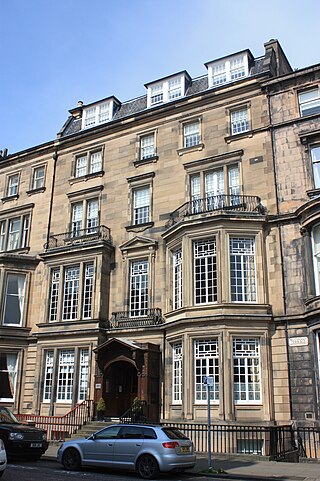
John Ritchie Findlay was a Scottish newspaper owner and philanthropist.
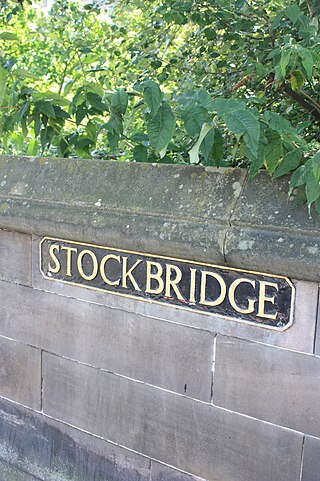
Stockbridge is a district of Edinburgh, located north of the city centre, bounded by the New Town and by Comely Bank. The name is Scots stock brig from Anglic stocc brycg, meaning a timber bridge. Originally a small outlying village, it was incorporated into the City of Edinburgh in the 19th century. The current "Stock Bridge", built in 1801, is a stone structure spanning the Water of Leith. The painter Henry Raeburn (1756–1823) owned two adjoining estates, Deanhaugh and St Bernard's, which he developed with the assistance of the architect James Milne. Milne was also responsible for the fine St Bernard's Church (1823) in Saxe Coburg Street. Ann Street, designed by Raeburn and named after his wife, is a rare early example of a New Town street with private front gardens.
James Leslie Findlay was a Scottish architect and soldier.
Frederick Thomas Pilkington (1832-1898), pupil of his father, was a "Rogue" British architect, practising in the Victorian High Gothic revival style. He designed mostly churches and institutional buildings in Scotland. Typical of his work is the Barclay Viewforth Church in Edinburgh, a polychrome stone structure with early French Gothic details.
Ian Gordon Lindsay was a Scottish architect. He was most noted for his numerous restoration projects, sometimes of whole villages but curiously was also involved in the design of several hydro-electric power stations.

John Thomas Rochead was a Scottish architect. He is most noteworthy on a national scale for having been the designer of the Wallace Monument.
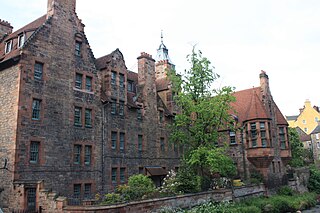
Arthur George Sydney Mitchell was a Scottish architect. He designed a large number of bank branches, country houses, churches, and church halls. His most significant commissions include the housing developments at Well Court and Ramsay Garden, both in Edinburgh.
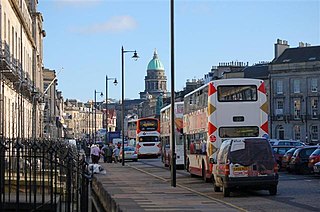
The West End is an affluent district of Edinburgh, Scotland, which along with the rest of the New Town and Old Town forms central Edinburgh, and Edinburgh's UNESCO World Heritage Site. The area boasts several of the city's hotels, restaurants, independent shops, offices and arts venues, including the Edinburgh Filmhouse, Edinburgh International Conference Centre and the Caledonian Hotel. The area also hosts art festivals and crafts fairs.

Sir George Washington Browne was a Scottish architect. He was born in Glasgow, and trained there and in London. He spent most of his career in Edinburgh, although his work can be found throughout Scotland and beyond. He was involved in nearly 300 projects, including many public and commercial buildings. One of his most notable buildings is Edinburgh's Central Library, and he became recognised as an authority on library planning and design. He came to national attention after winning a competition to design a bridge over the River Thames in London, although this was never realised. He was the first architect to be elected as President of the Royal Scottish Academy. He also served as President of the Edinburgh Architectural Association, and was instrumental in setting up the Royal Fine Art Commission for Scotland.

William Leiper FRIBA RSA (1839–1916) was a Scottish architect known particularly for his domestic architecture in and around the town of Helensburgh. In addition, he produced a small amount of fine ecclesiastical and commercial architecture in Glasgow and the Scottish Lowlands. He was also an accomplished watercolour artist, and from the late 1870s spent much spare time painting in oils and watercolours.
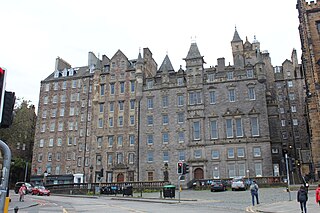
David Cousin was a Scottish architect, landscape architect and planner, closely associated with early cemetery design and many prominent buildings in Edinburgh. From 1841 to 1872 he operated as Edinburgh’s City Superintendent of Works.

Frank Lewis Worthington Simon was a British architect working in the Arts and Crafts style. In Scotland, he was sufficiently noteworthy as to be commissioned by Queen Victoria to remodel Balmoral Castle. In later life he worked in Canada and is best remembered for the Manitoba Legislative Building.

Sir Thomas Duncan Rhind was a Scottish architect and military figure. He was knighted in 1919 for services to his country.
Alexander Lorne Campbell (1871–1944) was a Scottish architect, who practised across Scotland. He was founder of the successful firm of Scott & Campbell.
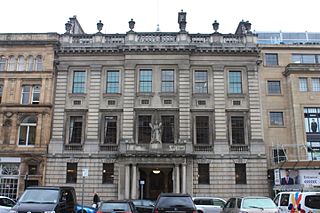
Alexander Hunter Crawford (1865–1945) was a Scottish architect and businessman. Closely associated with his father's firm of Crawford's Biscuits he designed many biscuit factories, and became owner of the company in 1931. Many of his villas are now listed buildings. His masterpiece is probably the huge Masonic Lodge on George Street in Edinburgh.

James Graham Fairley FRIBA MSGS (1846–1934) was a 19th/20th century Scottish architect working mainly in the West Lothian area, specialising in churches and schools.
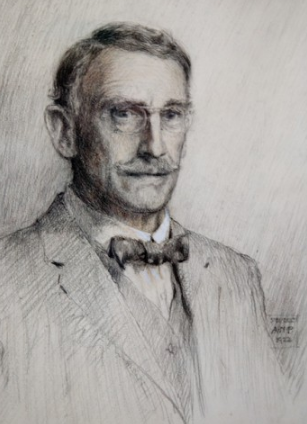
Alexander Nisbet Paterson ARIBA PRIAS (1862–1947) was a Scottish architect, mainly working in the Arts and Crafts style. He was president of the Royal Institute of Architects in Scotland (RIAS).



















